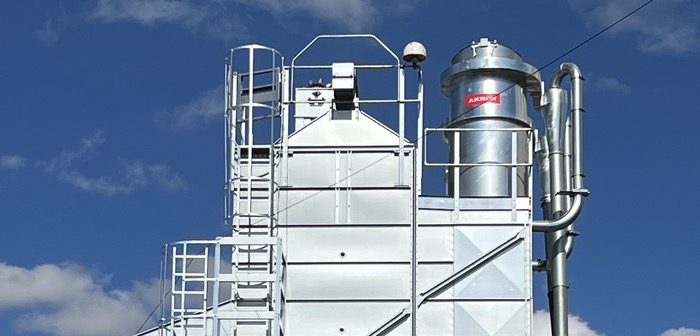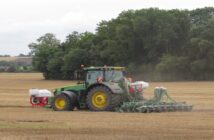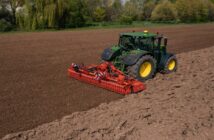In 2021, WF Wells & Sons’ grain drier caught fire and had to be replaced. A five-brother partnership, and the third generation to farm near Bath, WF Wells & Sons’ farming enterprise grows OSR, winter wheat and barley, spring barley and beans, plus maize and has a dairy and beef herd.
“The drier caught fire as a result of an accumulation of dust. The dry weather meant that the crop was particularly dusty and dirty and the location of the drier, which had been installed in a tight space, meant that it was dragging in dust laden air which was settling on the burner tubes,“ explained Andrew Wells.
“After the fire I called Andrew Head, sales director, BDC Systems Ltd, with whom I have a long standing and trusted relationship. He quickly confirmed the cause of the fire, which coincidentally aligned exactly with the view of my insurer,” continued Wells.
Despite a new drier having to fit within the same tight space as that of the destroyed drier, and the top of the drier having to protrude through the roof of the grain shed, Head worked closely with Wells to re-design the plant so that the risk of fire was greatly reduced.
Svegma 37tph continuous flow drier
On Mr Head’s recommendation, and following discussions with the insurers around BDC Systems’ ability to provide the best value for money, Wells decided to install a Svegma 37tph continuous flow drier with a 4m footprint so fitting it into the existing space was potentially a challenge.
The careful design of the new plant allowed the Svegma to fit safely into the tight space by rotating it 180 degrees enabling dust-free fresh air to be drawn into the drier’s furnaces.
Working closely with BDC Systems, Mr Wells now has a future-proofed plant which takes advantage of the most up to date grain handling equipment.
From the field grain is now tipped into a large gravity discharge intake bunker from where it is elevated via an existing belt and bucket elevator, and dropped through an Aagaard heavy duty aspiration pre-cleaner to remove any light dust and chaff, helping to reduce the fire risk.
The grain is then transported via a Skandia SEI35/14, 60tph belt and bucket elevator which feeds a Skandia KTIFFR20/33, 60tph flow and return conveyor, to the Svegma drier. Once full, the overflow/surplus grain from the drier flows by gravity back to the intake bunker.
The Svegma is fitted with vertical turboclean dust extraction fans and dust extracted is pneumatically conveyed to the dust box by a Kongskilde TLR blower, rather than remaining airborne around the furnaces.
The drier is discharged through a Skandia KTIFb20/33, 60tph chain and flight conveyor with grain being transported through an existing reciprocating cleaner or direct to store using the existing handling system.
Wells also chose to deploy BDC’s Moisture Monitoring System (MMS) to monitor the moisture content (mc) of the crop going into and out of the drier. Should the mc fall below or rise above the predefined levels an email or text message alert is sent, allowing any necessary adjustments to be made remotely.
The drier was supplied with BDC Systems’ PLC touch screen control panel incorporating the drier, grain handling equipment and MMS controls enabling Wells to remotely view and adjust the drier settings as well as logging all drier data including: drier operating temperatures, discharge speeds, incoming and outgoing moisture content.
BDC Systems worked with Mr Wells to configure the control panel so that a chemical to prevent grain beetle infestation could be applied, using an existing applicator, to the grain once dried and on its way to the grain store via the Skandia conveyor.
“The upgraded plant is a dream to use,” said Wells. “I dared not leave the old drier in case there was an issue. Now I am no longer tied to the grain shed during harvest. The remote access to the control panel means that I can log-in and check what’s happening and make any modifications, including shutting the plant down, regardless of where I am.”




